Taking care of your women’s jackets can help them last longer and look great. The best way to care for jackets is to follow the care label instructions and clean them regularly. Different materials need different care, so it’s important to know what your jacket is made of.
I always check the care label before washing or cleaning any jacket. For most jackets, gentle washing in cold water works well. Some jackets might need dry cleaning instead. After washing, I make sure to dry jackets properly to keep their shape.
Storing jackets correctly is also key. I hang wool and leather jackets on sturdy hangers. For puffy jackets, I use storage bags or boxes to keep them fluffy. Taking care of zippers, buttons, and other details helps jackets stay in good shape too.
Table of Contents
Key Takeaways
- Read care labels and clean jackets regularly using the right method
- Dry and store jackets properly to maintain their shape and quality
- Pay attention to jacket details like zippers and buttons for better care
Understanding Leather Jackets
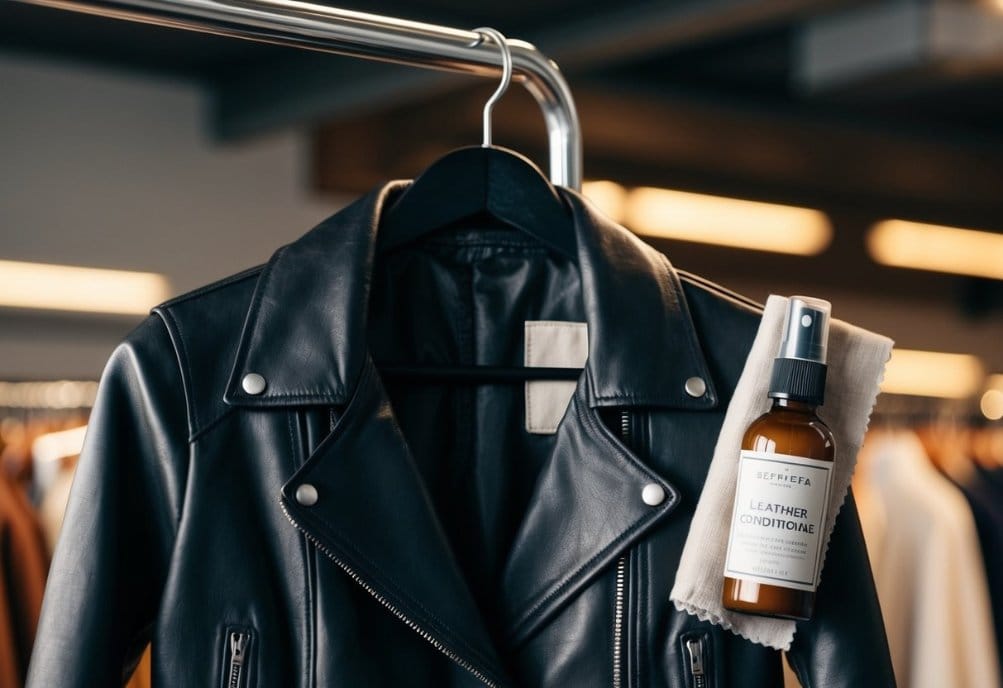
Leather jackets are timeless pieces that can last for years with proper care. I’ll explain how to spot quality leather and the main types used in jackets.
Identifying Quality Leather
I look for a few key signs of quality leather in jackets. The smell is important – high-grade leather has a rich, natural scent. I run my hand over the surface to check for softness and flexibility. Quality leather feels smooth and supple.
The grain pattern is another clue. I examine it closely for natural variations. Fake leather often has an artificial, uniform look. Real leather may have small imperfections or marks.
I also check the weight. Quality leather jackets feel substantial and well-made. Cheaper versions tend to be lighter and flimsier.
Types of Leather Used in Jackets
I’ve found several common leather types in jackets. Full-grain leather is the highest quality. It’s made from the top layer of the hide and keeps the natural grain. It’s very durable but can be pricey.
Top-grain leather is the second-highest grade. It’s thinner and more pliable than full-grain. This makes it ideal for jackets that need flexibility.
Split leather comes from the lower layers of the hide. It’s less durable but more affordable. Some jackets use it for a suede-like finish.
Bonded leather is made from scraps pressed together. It’s the cheapest option but won’t last as long as other types.
Routine Leather Care
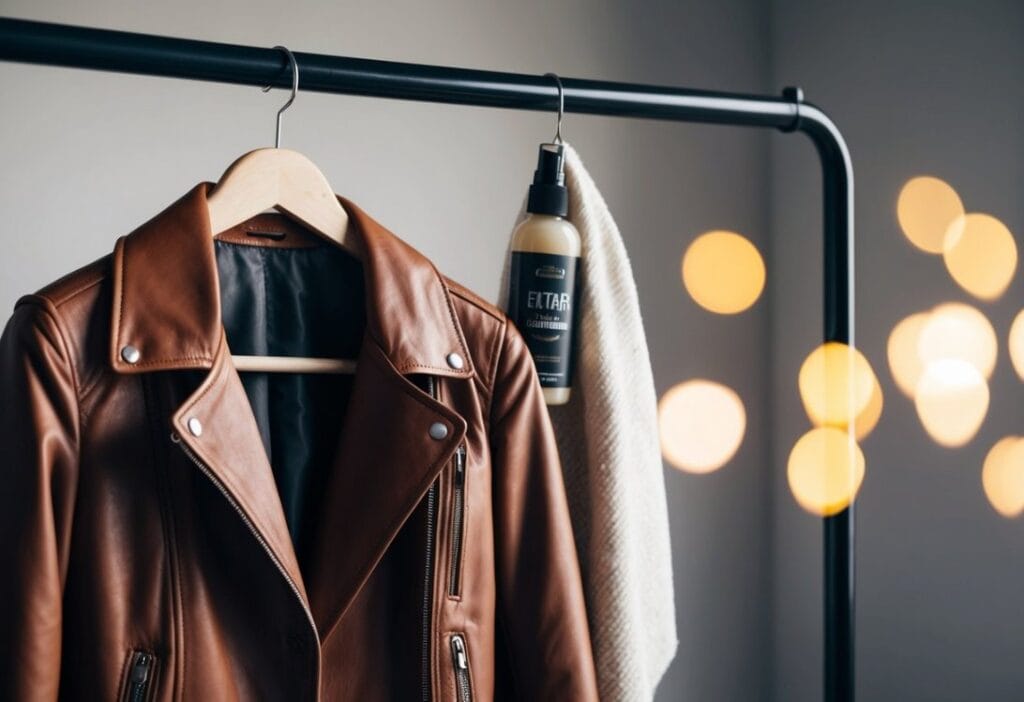
Leather jackets need regular care to stay in good shape. I’ll cover the key steps to keep your jacket looking great for years to come.
Cleaning Leather Jackets
I start by brushing off any loose dirt with a soft cloth. For tougher spots, I use a damp cloth with a tiny bit of mild soap. I’m careful not to soak the leather. I wipe in small circles, then use a clean damp cloth to remove any soap. For really stubborn stains, I might use a leather cleaner made for jackets.
I always test cleaners on a hidden spot first. This helps me avoid damaging the jacket. After cleaning, I let the jacket air dry away from heat sources. I never put it in the dryer or use a hairdryer on it.
For the lining, I use a slightly damp cloth to wipe it down. If it’s really dirty, I might use a small amount of gentle detergent. I’m always careful not to get the lining too wet.
Conditioning Leather Jackets
After cleaning, I condition my leather jacket to keep it soft and prevent cracking. I use a leather conditioner made for jackets. I apply a small amount with a soft cloth, working it into the leather in circular motions.
I pay extra attention to areas that bend a lot, like elbows and cuffs. These spots tend to dry out faster. I’m careful not to over-condition, as this can make the jacket too soft or change its color.
I condition my jacket every few months, or more often if I wear it a lot. In dry climates, I might need to do it more frequently. I always let the jacket dry completely after conditioning before wearing it.
Applying Leather Polish
Polish helps protect the leather and gives it a nice shine. I use a polish that matches my jacket’s color. I apply a thin layer with a soft cloth, working in small circles.
I focus on scuffed areas to help hide marks. After applying, I let it sit for a few minutes. Then I buff it with a clean cloth to bring out the shine. I’m careful not to use too much polish, as it can build up and look uneven.
For suede jackets, I don’t use polish. Instead, I use a suede brush to restore the nap. I brush gently in one direction to keep the suede looking fresh.
Leather Waterproofing Techniques
To protect my jacket from rain, I use a leather waterproofing spray. I apply it in a well-ventilated area, holding the can about 6 inches from the jacket. I spray in light, even coats, making sure to cover all areas.
I pay special attention to seams and areas that might get wet easily. After spraying, I let the jacket dry completely before wearing it. I reapply waterproofing every few months, or more often if I’m in a rainy climate.
For suede jackets, I use a special suede waterproofer. It helps protect the delicate surface without changing its texture. I’m always careful to test any new product on a hidden spot first.
Storing and Protecting Leather
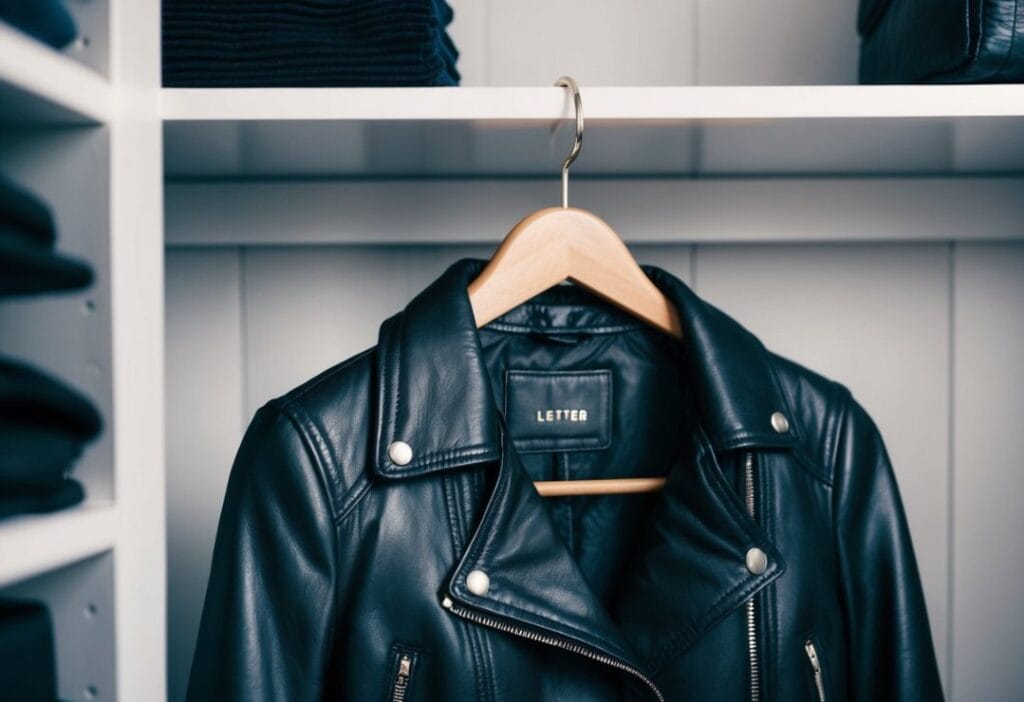
Proper storage and protection are key to keeping leather jackets in great condition. Let’s look at the best practices for storing leather and guarding it against damage.
Proper Storage Practices
I always hang my leather jacket on a padded hanger. Wire hangers can stretch the leather, so I avoid them. I keep my jacket in a cool, dry closet away from direct sunlight. This prevents fading and cracking.
I use a breathable cotton garment bag to protect against dust. It lets the leather breathe while keeping it clean. I never store leather in plastic bags – they can trap moisture and lead to mold.
Before storing for a long time, I clean and condition my jacket. This keeps the leather soft and supple. I use a damp cloth to wipe it down, then apply a leather conditioner.
Protecting Leather from Damage
I’m careful to protect my leather jacket from water damage. If it gets wet, I let it air dry at room temperature. I never use heat to dry leather – it can cause cracking.
I apply a leather protector spray before wearing my jacket in wet weather. This creates a barrier against moisture and stains.
To prevent scratches, I keep sharp objects away from my jacket. I also avoid overstuffing the pockets, which can stretch the leather.
Regular cleaning is important. I wipe off dust and dirt with a soft cloth. For tougher stains, I use a leather cleaner made for my jacket’s type of leather.
Dealing with Stains and Scratches
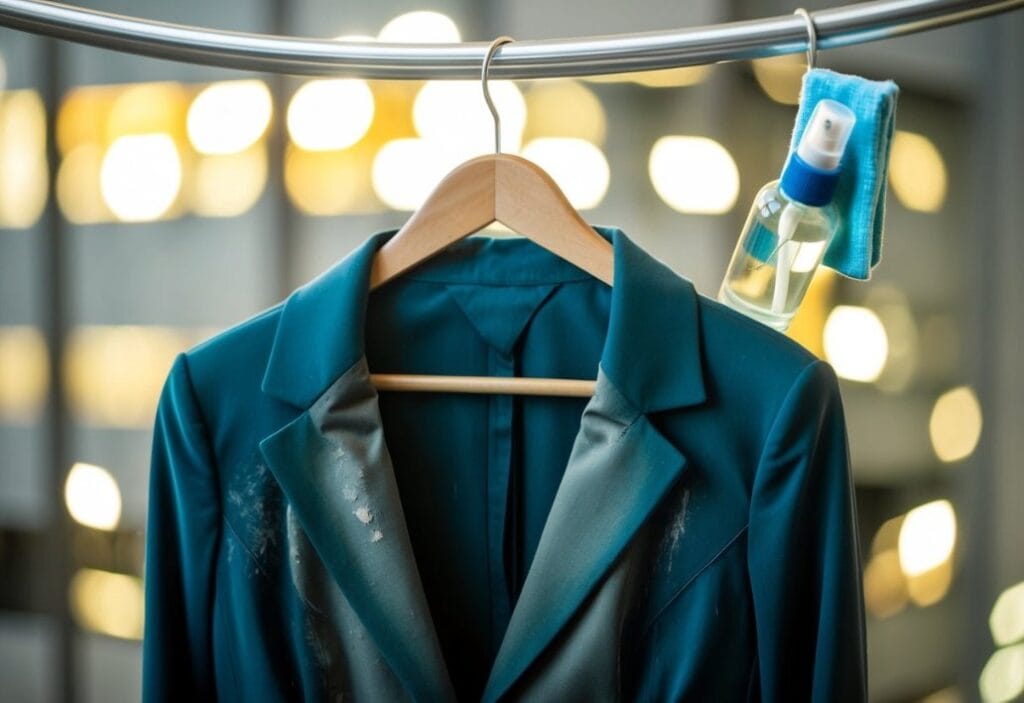
Stains and scratches on women’s jackets can be tricky to handle. I’ll cover some effective methods for removing stains, treating scratches on leather, and when it’s best to seek professional help.
Stain Removal Procedures
I always start by identifying the stain type before treating it. For water-based stains, I blot the area with a clean, dry cloth. Oil-based stains need a different approach. I sprinkle cornstarch or talcum powder on the spot, let it sit overnight, then brush it off.
For tougher stains, I use a mixture of equal parts water and white vinegar. I apply it gently with a soft cloth, being careful not to saturate the fabric. After cleaning, I air dry the jacket away from direct heat.
Some stains may require specialized cleaners. I test these on a hidden area first to ensure they won’t damage the jacket’s color or material.
Treating Scratches on Leather
Light scratches on leather jackets often respond well to home remedies. I start by cleaning the area with a damp cloth. Then, I apply a small amount of leather conditioner, rubbing it in circular motions. This can help minimize the appearance of minor scratches.
For deeper scratches, I use a leather repair kit. These kits typically include a filler compound and colorant. I carefully follow the instructions, matching the color as closely as possible to the jacket.
If the scratch is very deep or the leather is torn, I avoid DIY fixes. These situations usually need professional attention to prevent further damage.
When to Use Professional Services
I turn to professional cleaning services for delicate fabrics or severe stains. Dry cleaning is often the safest option for wool, silk, or suede jackets. These materials can be easily damaged by improper cleaning methods.
For leather jackets with deep scratches or extensive damage, I seek out a leather specialist. They have the tools and expertise to repair and restore leather without compromising its quality.
I also use professional services when I’m unsure about the jacket’s care instructions or if previous cleaning attempts haven’t worked. It’s better to invest in professional care than risk ruining a valuable jacket.
Cleaning Special Leather Types
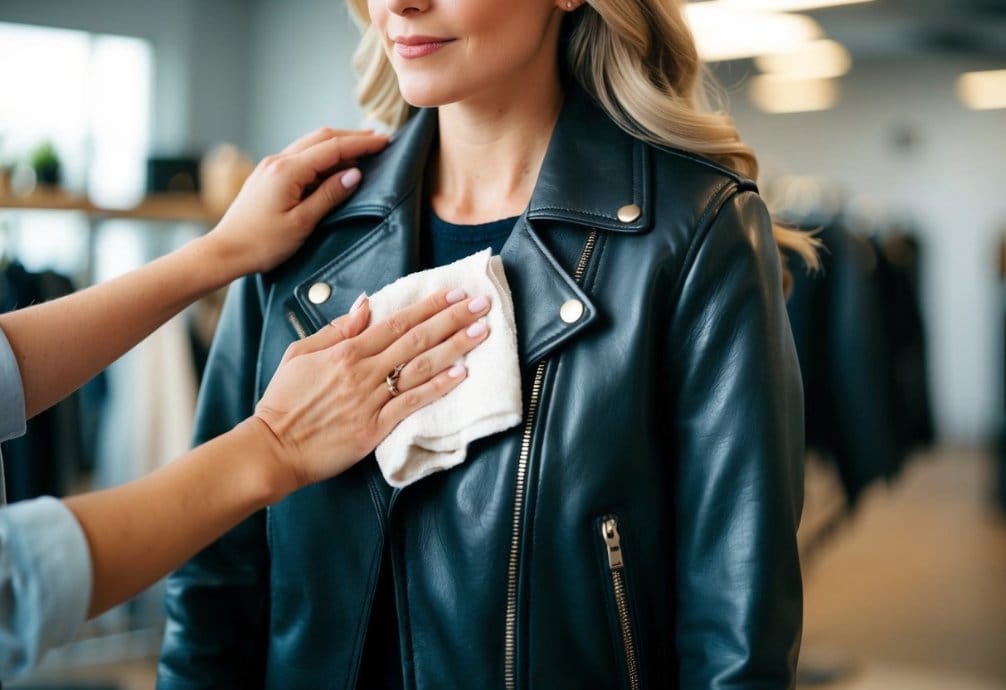
Different leather types need special care. I’ll explain how to clean suede and patent leather jackets. These tips will help keep your jackets looking great.
Caring for Suede Jackets
I always start by brushing my suede jacket with a suede brush. This removes dirt and restores the nap. For tougher stains, I use a suede eraser. I gently rub it over the mark.
If the jacket gets wet, I let it air dry. I never use heat. Once dry, I brush it again to restore the texture.
For deep cleaning, I use a suede cleaner. I test it on a hidden spot first. Then I apply it with a soft cloth, working in small sections.
I finish by brushing the jacket one last time. This helps even out the nap and remove any leftover cleaner.
Tips for Cleaning Patent Leather Jackets
I clean my patent leather jacket with a soft, damp cloth. For stubborn dirt, I use mild soap and water. I’m careful not to soak the leather.
I dry the jacket right away with a clean, dry cloth. This stops water spots from forming.
For scuffs, I use a special patent leather cleaner. I apply it with a soft cloth, using gentle circular motions.
I never use harsh chemicals or abrasives. These can damage the glossy finish.
To keep the shine, I buff the jacket with a soft cloth after cleaning. This brings back its glossy look.

